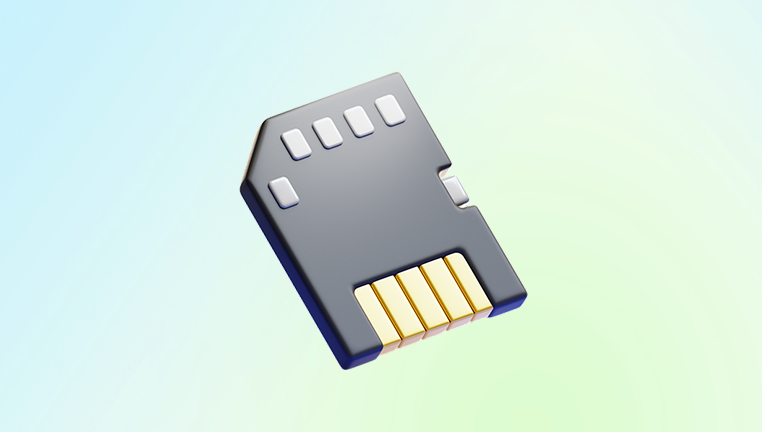Stored on memory cards within cameras, smartphones, drones, and other devices, these photos chronicle vacations, weddings, birthdays, artistic work, and day-to-day moments. As technology becomes increasingly integrated into our lives, memory cards have become essential for storing these digital snapshots. But what happens when those memories are suddenly lost?
One of the most common and often heartbreaking data loss scenarios involves the accidental deletion of photos from a memory card. Whether it’s an unintended tap on the "delete" button, a misclick during formatting, or file corruption due to improper ejection, such incidents can erase irreplaceable images in an instant. The good news? Deleted doesn't always mean gone forever.
Memory Cards and Data Deletion
Before diving into recovery strategies, it helps to understand how memory cards work and what happens when files are deleted.

What Is a Memory Card?
A memory card is a small, portable storage device used to store digital data. Common types include:
SD (Secure Digital) cards
microSD cards
CF (CompactFlash) cards
xD-Picture Cards
Memory Stick (Sony devices)
They come in different storage capacities, ranging from a few megabytes to hundreds of gigabytes, and are used in devices like cameras, smartphones, tablets, and drones.
What Happens When You Delete Photos?
Deleting a file from a memory card does not instantly erase it. Instead, the file's data remains on the card, but its storage space is marked as available for reuse. Until that space is overwritten by new data, the original photo is still recoverable.
This is why it’s vital to stop using the memory card immediately after noticing deletion. Every new photo or file written to the card decreases your chance of successful recovery.
Common Causes of Deleted Photos on Memory Cards
Understanding the cause of data loss can help you choose the right recovery approach.
1. Accidental Deletion
The most frequent cause. Users may unintentionally delete individual photos or format the entire card.
2. Formatting
Formatting the card erases the file system structure. While the data might still be on the card, the system no longer recognizes it.
3. Corruption
A corrupted memory card may show errors or prompt reformatting. Causes include improper ejection, sudden power loss, or malware.
4. Physical Damage
Water exposure, bending, or scratching the card can cause it to become unreadable, though recovery is still possible with specialized tools or services.
5. File Transfer Errors
Interruptions during file transfers (e.g., sudden power loss or device disconnection) may cause data to be lost.
Is Recovery Really Possible?
Yes—if you act quickly and the card isn't physically damaged or overwritten.
Most deleted photos can be recovered because deletion typically affects only the file directory and not the actual image data. However, success depends on several factors:
How long ago the deletion occurred
Whether the card has been used since deletion
The type of memory card and device
The extent of logical or physical damage
Preparation Before Recovery
To maximize your chances:
1. Stop Using the Card Immediately
Don’t take new photos or save new data. This prevents overwriting.
2. Use a Card Reader
Connect the memory card directly to your computer using a card reader. Avoid using the camera or phone for access.
3. Make a Backup Image
If possible, use disk imaging software to create a sector-by-sector copy of the memory card. This ensures you have a backup even if recovery fails or causes further issues.
Choosing the Right Recovery Method
There are two primary recovery approaches:
A. DIY Software Recovery
Use photo recovery software to scan and recover deleted files. This is suitable for logical data loss scenarios like accidental deletion or formatting.
B. Professional Data Recovery Services
If the card is physically damaged or unresponsive, professional help may be necessary. These services have specialized equipment to recover data from damaged or inaccessible cards.
Best Photo Recovery Software for Memory Cards
Here are some of the top-rated tools to help you recover deleted photos yourself:
Drecov Data Recovery
An excellent choice for beginners and pros alike, Panda Recovery is purpose-built for photo and video recovery from memory cards and other storage media.
Features:
Quick and deep scan modes
Supports RAW formats (CR2. NEF, ARW, etc.)
Free preview before recovery
Easy three-step recovery process
Best For: General users looking for simplicity and effective results.
Features:
File preview and filtering
Recovery from deletion, formatting, and partition loss
High compatibility with file formats and storage devices
Best For: Casual users looking for a guided experience.
Step-by-Step Guide to Recover Deleted Photos
Here’s how to recover deleted photos using most recovery software:
Step 1: Download and Install the Software
Install the recovery tool of your choice on a different drive (not the one you’re recovering from).
Step 2: Insert the Memory Card
Use a card reader to connect the memory card to your computer.
Step 3: Launch the Recovery Program
Open the software and select the memory card as the source device.
Step 4: Scan the Memory Card
Choose between quick scan (faster, surface-level) and deep scan (slower but more thorough).
Step 5: Preview Recoverable Files
Most tools let you preview found photos. Use filters to locate specific file types or dates.
Step 6: Recover Selected Photos
Select the photos you want and recover them to a different storage location (not the same card).
Tips for a Successful Recovery
Act Quickly: The sooner you attempt recovery, the better the chances.
Avoid Writing to the Card: Even previewing images on the device can overwrite data.
Use a Reliable Card Reader: A faulty connection can corrupt data further.
Recover in Batches: For large recoveries, consider doing them in smaller parts to ensure accuracy.
When to Seek Professional Help
While software is effective for most cases, sometimes it's not enough. Consider professional recovery services if:
The card is not recognized at all
There’s physical damage (e.g., cracks, burns)
Repeated errors during scanning
Important data can't be found using DIY tools
Recovery labs use specialized equipment to read damaged flash chips directly, which software cannot do.
Preventing Future Photo Loss
Data recovery is helpful, but prevention is better. Here are some tips to keep your photos safe:
1. Regular Backups
Always back up your photos to cloud services or external drives. Automate this if possible.
2. Use High-Quality Cards
Cheaper cards are more prone to failure. Invest in trusted brands like SanDisk, Lexar, and Samsung.
3. Avoid Interrupting File Transfers
Do not remove the card or power off the device during file transfers.
4. Format in Camera
Instead of formatting the card on a computer, do it directly in the device you plan to use. This ensures compatibility and reduces corruption risk.




